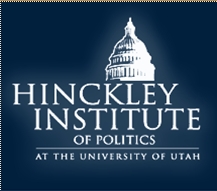Protecting Journalists in Foreign War Zones
Abstract
In light of the recent beheadings of journalists Steven Sotloff and James Foley at the hand of ISIS, this paper will examine the threats to life and freedom of expression that foreign correspondents face in war zones, ultimately arguing for greater protection for combat journalists. The paper begins with an overview of the history of war reporting, which began in the American Civil War and saw heightened repercussions in the Vietnam War. Next, this paper inspects the current extent of journalist fatalities, the problem addressed in this policy brief. Journalists in war zones are under considerably greater danger today because the changing nature of war makes the frontlines of battle less recognizable. Reporters are often specifically targeted as a result of their status, and fatalities of foreign correspondents are on the rise, with the highest death rate in 2012. With the growing importance of this problem, three solutions are offered in attempt to solve the growing issue. The plans presented in this policy brief intend to better protect foreign correspondents and the truth they uncover in war zones.Keywords
Authors who publish with this journal agree to the following terms:
a) Authors retain copyright over their work, while allowing the conference to place this unpublished work under a Creative Commons Attribution License, which allows others to freely access, use, and share the work, with an acknowledgement of the work's authorship and its initial presentation at this conference.
b) Authors are able to waive the terms of the CC license and enter into separate, additional contractual arrangements for the non-exclusive distribution and subsequent publication of this work (e.g., publish a revised version in a journal, post it to an institutional repository or publish it in a book), with an acknowledgement of its initial presentation at this conference.
c) In addition, authors are encouraged to post and share their work online (e.g., in institutional repositories or on their website) at any point before and after the conference.
d) The Author grants Marriott Library the nonexclusive, perpetual, worldwide, irrevocable right to reproduce, distribute, display, publish, archive, preserve, digitize, transcribe, translate, provide access and transmit their work (in whole or in part) for any non-commercial purpose including but not limited to archiving, academic research, and marketing in such tangible electronic formats as may be in existence now or hereafter developed.
e) Marriott Library may elect, in its sole discretion, not to exercise the rights granted herein.
f) Author shall retain copyright in and to the Work and Marriott Library shall provide proper attribution in its exercise of the rights granted herein.
g) Author is solely responsible and will indemnify and hold Marriott Library and/or the University of Utah harmless for any third party claims related to the Work as submitted for publication.


